If you’re searching for a plant that brings vibrant color and charm to your home or garden during the cooler months, Cyclamen is a fantastic choice. With their delicate, upswept blooms and variegated heart-shaped leaves, these elegant plants are surprisingly easy to care for when you understand their natural preferences.
Native to the Mediterranean region, Cyclamen naturally grow in cool, shady areas and go dormant during hot, dry summers. By mimicking these conditions and caring for your Cyclamen in a gentle, natural way, you can enjoy their flowers for weeks and encourage them to thrive for years to come.
In this article, we’ll guide you through everything you need to know about Cyclamen plant care — naturally. From light, water, and soil preferences to dormancy tips and natural pest control, let’s uncover the secrets to keeping your Cyclamen happy and healthy.
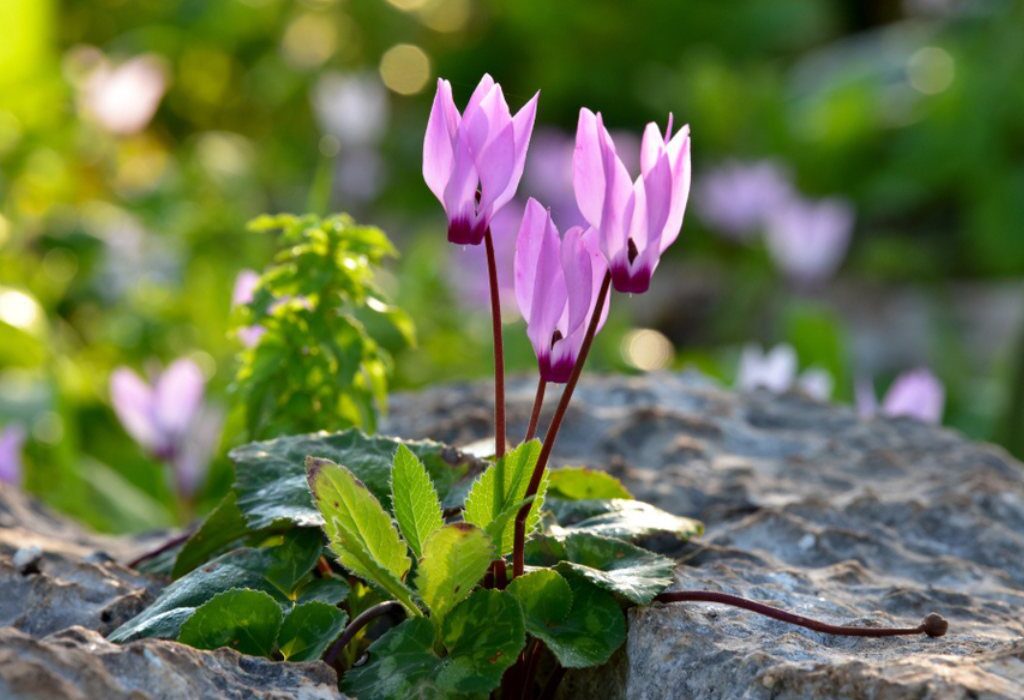
Why Grow Cyclamen?
Before we dive into care tips, here’s why Cyclamen are a favorite among plant lovers:
- Elegant, long-lasting flowers in shades of pink, red, white, and purple.
- Attractive, marbled foliage that looks beautiful year-round.
- Naturally bloom during fall, winter, and early spring, brightening homes when many other plants are dormant.
- Compact and perfect for windowsills, tabletops, and shaded garden spots.
- Low maintenance when grown in natural, suitable conditions.
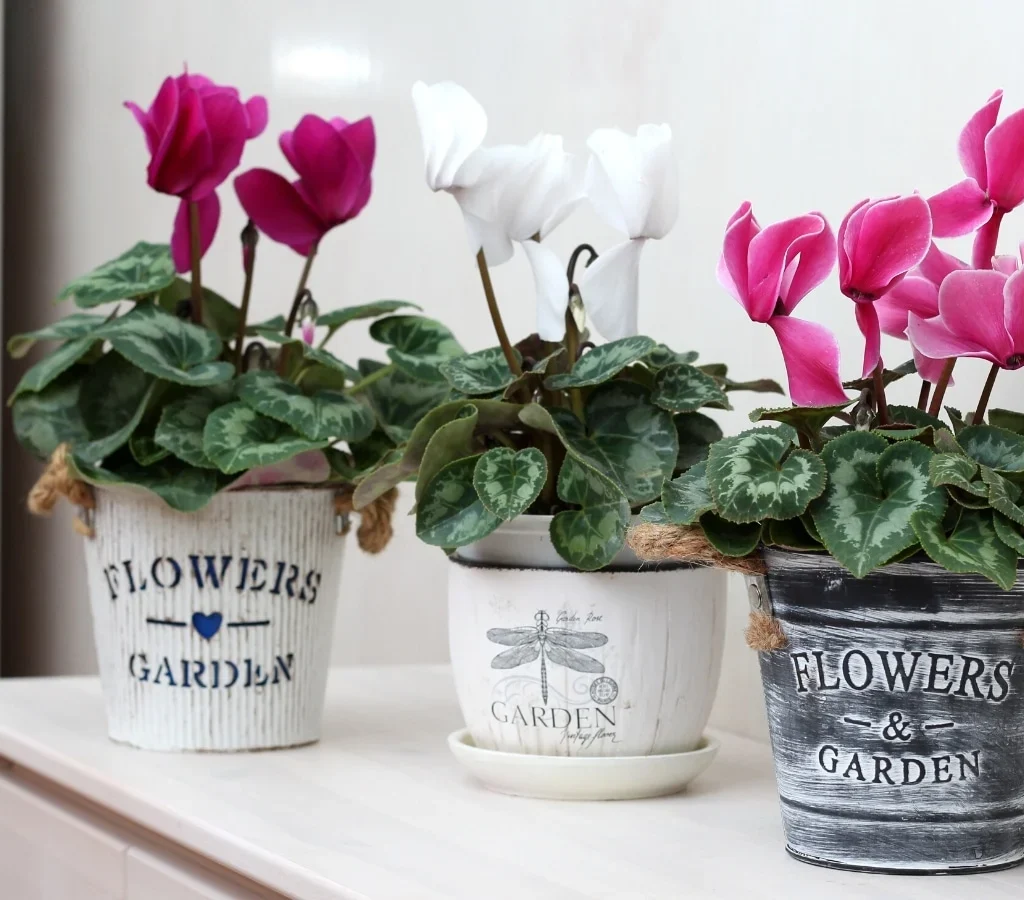
Types of Cyclamen
There are over 20 species of Cyclamen, but the most common and widely grown is Cyclamen persicum (Florist’s Cyclamen). Other varieties include:
- Cyclamen hederifolium (ivy-leaved Cyclamen)
- Cyclamen coum (round-leaved Cyclamen)
- Cyclamen mirabile (noted for its pink blooms)
While care principles are generally similar, some varieties are better suited to outdoor gardens, while others thrive indoors.
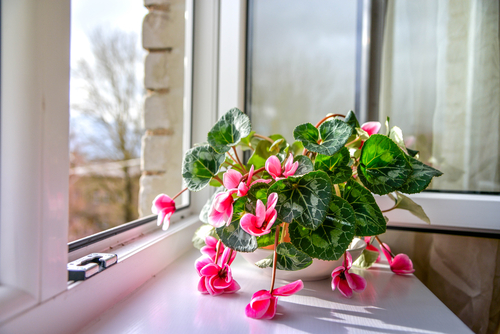
Best Natural Growing Conditions for Cyclamen
To naturally care for Cyclamen, it’s essential to replicate the environment they enjoy in the wild.
1. Light Requirements
Cyclamen prefer bright, indirect light. Direct sunlight can scorch the leaves and flowers, while too little light results in poor blooming.
- Indoors: Place near an east or north-facing window.
- Outdoors: Grow in partial to full shade, under trees, or along shaded garden borders.
2. Temperature Preferences
These plants thrive in cool temperatures — ideal for fall and winter.
- Optimal temperature: 50°F to 65°F (10°C to 18°C)
- Avoid placing them near heaters, radiators, or south-facing windows where heat builds up.
Tip: Cyclamen are naturally dormant in summer. Don’t force them to grow in hot conditions.
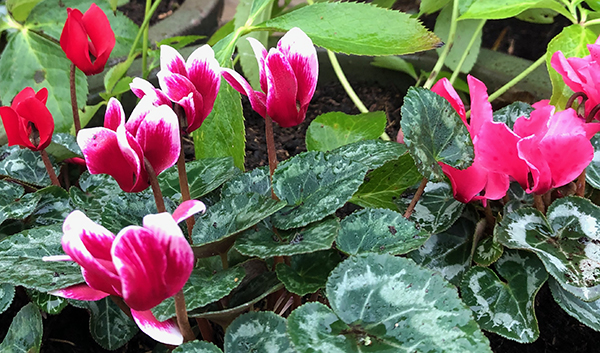
The Right Soil and Potting Mix
Cyclamen need well-draining soil to avoid root and tuber rot.
1. Natural Potting Mix
Create a light, airy mix using:
- 2 parts peat moss or coconut coir
- 1 part perlite or coarse sand
- 1 part leaf mold or organic compost
2. Outdoor Planting
Plant Cyclamen in a shady, sheltered spot with loamy, well-drained soil rich in organic matter.
Tip: Never use heavy, water-retentive soils for Cyclamen.
Watering Cyclamen: A Natural Approach
Cyclamen dislike both overwatering and drying out completely.
Watering Tips:
- Water when the top inch of soil feels dry.
- Use room-temperature, filtered water or rainwater.
- Water around the edge of the pot, avoiding the crown and tuber to prevent rot.
- Allow excess water to drain away completely.
Frequency: Every 5–7 days during active growth and flowering (fall–spring). Reduce watering when the plant begins to go dormant in late spring.
Signs of Overwatering:
- Yellowing leaves
- Drooping stems
- Soft, mushy tuber
Signs of Underwatering:
- Wilting leaves
- Dry, crispy edges
Natural Fertilizing for Cyclamen
Cyclamen benefit from light, organic feeding during their growing season.
Natural Fertilizer Options:
- Compost tea: A gentle, nutrient-rich liquid made by steeping compost in water.
- Seaweed extract: Diluted and applied every two weeks.
- Organic houseplant fertilizer: Low in nitrogen, high in potassium to support blooming.
Feeding Schedule: Every 2–3 weeks during active growth. Stop fertilizing as the plant enters dormancy.
Managing Cyclamen Dormancy
Cyclamen naturally go dormant in late spring to early summer. Recognizing and respecting this rest period is key to long-term plant health.
Signs of Dormancy:
- Leaves yellow and wilt.
- Flower production ceases.
- The plant appears lifeless.
What to Do:
- Stop watering once foliage dies back.
- Move the pot to a cool, dry, shaded spot.
- Leave the tuber undisturbed for 2–3 months.
- Resume light watering when new growth appears in fall.
Tip: Don’t throw away a dormant Cyclamen — it’s just resting!
Natural Pest and Disease Management
Cyclamen are prone to a few common pests, especially indoors. Use natural, non-toxic solutions whenever possible.
Common Pests:
- Aphids
- Spider mites
- Mealybugs
- Cyclamen mites
Natural Remedies:
- Wipe leaves with a damp cloth or cotton swab dipped in soapy water.
- Spray with neem oil or diluted insecticidal soap.
- Encourage natural predators outdoors, like ladybugs.
Disease Prevention:
- Avoid overwatering.
- Ensure good air circulation.
- Remove yellow or dead leaves promptly.
Natural Ways to Encourage More Blooms
Want to enjoy an abundance of those charming Cyclamen flowers? Here’s how:
- Maintain cool temperatures.
- Provide bright, indirect light.
- Water regularly but don’t let the soil stay soggy.
- Feed naturally during the blooming season.
- Deadhead spent blooms and yellow leaves by gently twisting the stem near the base and removing it cleanly.
Tip: Cyclamen flowers can last several weeks if conditions remain cool.
Propagating Cyclamen Naturally
Though Cyclamen propagation requires patience, it’s a rewarding way to multiply your collection.
1. Seed Propagation
- Collect ripe seed pods after flowers fade.
- Sow seeds in a mix of compost and sand.
- Keep in a cool, shaded area with consistent moisture.
- Germination takes 1–3 months.
2. Tuber Division
- During dormancy, carefully unearth large tubers.
- Use a sterilized knife to divide, ensuring each piece has a growing point.
- Replant in fresh, well-drained soil.
Final Thoughts
Cyclamen are a delightful addition to any home or garden, offering vibrant flowers and attractive foliage during the cool months when other plants retreat. While they’ve gained a reputation for being finicky, these charming plants are surprisingly easy to care for when nurtured naturally, following their seasonal rhythms.
By providing the right light, cool temperatures, natural soil mixes, and gentle organic care, you’ll enjoy lush foliage and elegant blooms year after year. Plus, the satisfaction of reviving a Cyclamen after its summer dormancy is one of the purest joys for any plant lover.
So, whether you’re new to Cyclamen or looking to better care for your existing plants, follow these natural care tips and watch your Cyclamen flourish.

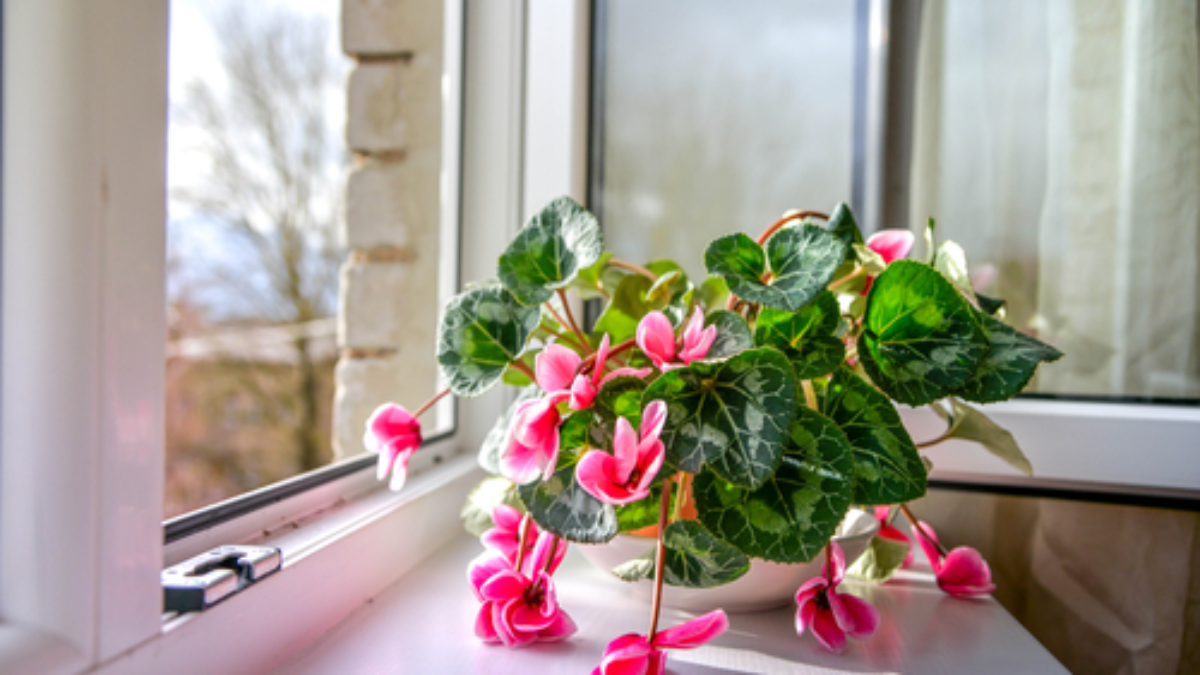





Leave A Comment